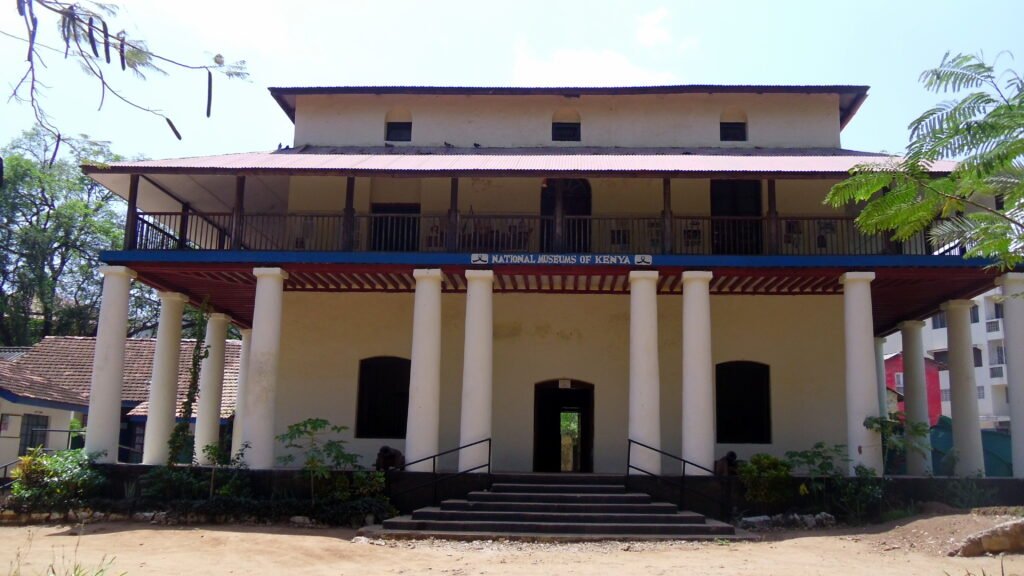 This building was constructed in early 1890`s for the Imperial British East Africa Company ( IBEA Co.) which by British Royal Charter took over for 50 years the Sultan of Zanzibar`s mainland concession from Kipini to Vanga ( the coastal strip ). Mr. Bell Smith, an employee of IBEA Co., oversaw the construction of the building, known then as the District Collector`s Office, to serve as the company’s first office. He died on 1st September 1894 and is buried in the graveyard of the Portuguese Chapel. The house was also known in the colonial days as the Boma, or Kwa Balozi , (Consul’s House) and housed offices on the ground floor and living accommodation in the upper for the District Collectors, later the Distict Officer ( D.O ) and then Distict Commissioner. The house was beautifully situated facing the sea, with steps in front leading down to the beach.
This building was constructed in early 1890`s for the Imperial British East Africa Company ( IBEA Co.) which by British Royal Charter took over for 50 years the Sultan of Zanzibar`s mainland concession from Kipini to Vanga ( the coastal strip ). Mr. Bell Smith, an employee of IBEA Co., oversaw the construction of the building, known then as the District Collector`s Office, to serve as the company’s first office. He died on 1st September 1894 and is buried in the graveyard of the Portuguese Chapel. The house was also known in the colonial days as the Boma, or Kwa Balozi , (Consul’s House) and housed offices on the ground floor and living accommodation in the upper for the District Collectors, later the Distict Officer ( D.O ) and then Distict Commissioner. The house was beautifully situated facing the sea, with steps in front leading down to the beach.
The Complex included the garage (present chief`s office), the District Officer`s Cottage (presently My Way Bar & restaurant) and the Prince Henry the Navigator Monument (Constructed in 1961), four cannons (3 iron and 1 bronze) and a bronze bell. The bronze canon was fired to start the Malindi Festival each year, and the bell was rung to mark office hours.
At Independence in 1963, the British appointed District Officer was replaced by the first Kenyan District Officer, Sheikh Azzan Bin Rashid, who had been the Liwali ( Sultan of Zanzibar`s representative ). The D.O lived in upstairs apartment for a year, but later had to move out as the rooms were required for government offices. When Malindi, which was a Sub District of the larger Kilifi District, was elevated to full District status in November 1966, the building became the office of the first Malindi District Commissioner, Ms. Clare Omollo.
The building was gazetted as a National Monument in 1991 and the DC and his staff moved to their new offices in July 2012. National Museums of Kenya then rehabilitated the building and it was opened to the public on the 24th of December 2013. The large airy rooms on the upper floor now contain exhibitions on the Mijikenda and Taita/Dawhida people. On the ground floor are Swahili and the Underwater Cultural Heritage exhibitions.
VISIT THE MALINDI HERITAGE COMPLEX AND LEARN THE HISTORY
OF MALINDI AND CULTURES OF THE COASTAL PEOPLE.
